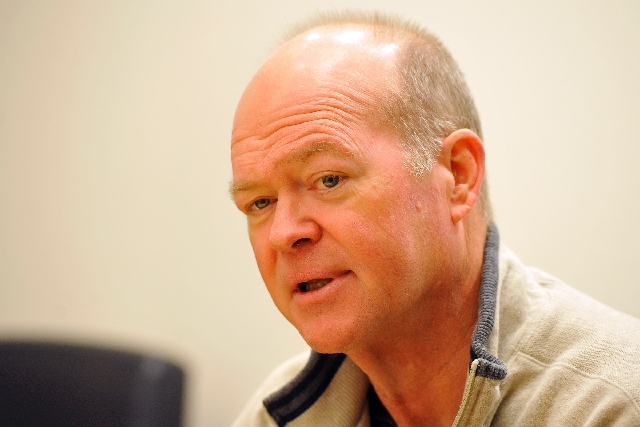Las Vegas panel backs continued public arts funding
A proposal to change the way Las Vegas funds public art didn’t impress critics on the city’s recommending committee who rejected the idea.
The committee voted 2-1 to recommend against the ordinance by Councilman Bob Beers that would make the city’s “one percent for the arts” program optional instead of mandatory.
The matter still has to go before the full City Council on May 15 but judging by the reception at the recommending committee it’s unlikely to have the support to pass.
Under Beers’ plan the City Council would be responsible for deciding how much it wants to spend annually on public art. Currently the amount is set by ordinance at 1 percent of the capital improvements budget.
According to a spreadsheet presented by city Chief Financial Officer Mark Vincent, the program generated about $1.4 million from 2005 to present.
The money has supported art projects such as the large paintbrushes on Charleston Boulevard in Arts District, decor to enhance a pedestrian bridge over Las Vegas Boulevard and public art on Lewis Avenue downtown.
Beers called the automatic spending an issue of morality, saying that in tough times the current setup allows the city “to lay people off and buy art without approval from City Council.”
But others, including the other two members of the recommending committee, disagreed and said they think public art is important enough to justify a steady flow of taxpayer money.
“I support public funding to a certain degree for arts,” Mayor Pro Tem Stavros Anthony said. “We have always had this kind of a mentality that the government and the private sector should be partnered in supporting the arts.”
Councilman Bob Coffin joined Anthony in voting to recommend against changing the ordinance.
The vote followed testimony from several people, including gallery owners, people connected to the city’s Arts Commission, artists and others with a stake in the outcome.
“I think it is a slippery slope to put this in an optional category,” said art consultant Michele Quinn. “Once you put it in an optional category I think we start giving people an out.”
Quinn wasn’t alone.
Bill Marion, a public relations and political consultant and former member of the Arts Commission, characterized the dedicated funding stream as a tribute to the vision of former Mayor Oscar Goodman, who was in office when the program was enacted.
“Mayor Goodman embraced it because it really did add to his vision for downtown,” Marion said. “He saw this as a legacy that would last for a long time.”
No one in the audience testified in favor of Beers’ ordinance.
But Beers did defend the proposal during testimony from the public.
Specifically, he disagreed with witnesses who correlated city spending on public art with the presence of a vibrant arts scene.
Beers praised one gallery owner for contributing more to the arts scene on his own than all of the city’s contribution and said public art can thrive with or without taxpayer money.
“Public art refers not to who bought it but to who gets to see it,” Beers said.
Contact reporter Benjamin Spillman at bspillman@reviewjournal.com or 702-383-0285 .






















